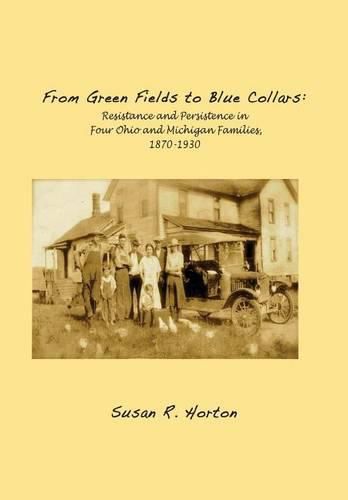Readings Newsletter
Become a Readings Member to make your shopping experience even easier.
Sign in or sign up for free!
You’re not far away from qualifying for FREE standard shipping within Australia
You’ve qualified for FREE standard shipping within Australia
The cart is loading…






There’s no shortage of biographies of the bankers and the titans of industry like J.P. Morgan and the Rockefellers who made great fortunes during our last Gilded Age. There’s also no shortage of biographies of the seven Presidents who led the country during those years that led up to the Great Depression. But what were the effects of the policies devised and put in place by those presidents and titans of industry on ordinary American workers? From Green Fields to Blue Collars suggests some answers to that question. It does so not by talking about the working class in the aggregate, but by offering an up-close and fine-grained history of just four working class families living in Ohio and Michigan, all immigrants or the children of immigrants. Each of their lives was playing out during economically turbulent years much like our present moment: a time of great income inequality. Like millions of other everyday American workers, they were trying as best they knew how to accommodate the transition from an agricultural to an industrial base, as we transition now from an industrial to a technological one. Which laws and policies helped ordinary Americans like them during those times, and which didn’t? Which of their decisions, attitudes, strategies, and habits helped carry them through, and which didn’t? Which of their attitudes, including their deep ambivalence about those in positions of power, were carried down the line, possibly even epigenetically, to their descendants? What might we learn, both individually and as a country, by looking closely at the decisions they made? Those questions should be of interest to anyone interested in the history of farming, of industrial production in Ohio and Michigan, in labor history, in the uses of genealogical research, and even to those interested in the most recent findings in genetics.
$9.00 standard shipping within Australia
FREE standard shipping within Australia for orders over $100.00
Express & International shipping calculated at checkout
There’s no shortage of biographies of the bankers and the titans of industry like J.P. Morgan and the Rockefellers who made great fortunes during our last Gilded Age. There’s also no shortage of biographies of the seven Presidents who led the country during those years that led up to the Great Depression. But what were the effects of the policies devised and put in place by those presidents and titans of industry on ordinary American workers? From Green Fields to Blue Collars suggests some answers to that question. It does so not by talking about the working class in the aggregate, but by offering an up-close and fine-grained history of just four working class families living in Ohio and Michigan, all immigrants or the children of immigrants. Each of their lives was playing out during economically turbulent years much like our present moment: a time of great income inequality. Like millions of other everyday American workers, they were trying as best they knew how to accommodate the transition from an agricultural to an industrial base, as we transition now from an industrial to a technological one. Which laws and policies helped ordinary Americans like them during those times, and which didn’t? Which of their decisions, attitudes, strategies, and habits helped carry them through, and which didn’t? Which of their attitudes, including their deep ambivalence about those in positions of power, were carried down the line, possibly even epigenetically, to their descendants? What might we learn, both individually and as a country, by looking closely at the decisions they made? Those questions should be of interest to anyone interested in the history of farming, of industrial production in Ohio and Michigan, in labor history, in the uses of genealogical research, and even to those interested in the most recent findings in genetics.